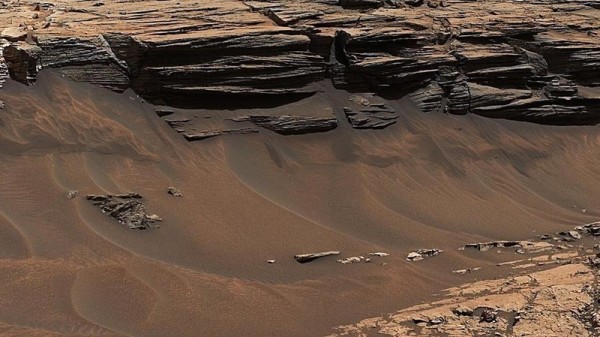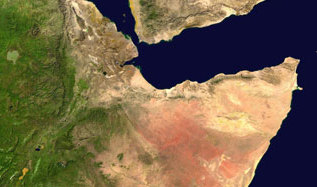PBS: Escaping Eritrea … [Read More...] about ካብ ውሽጢ ቤት ማእሰርታት ኤርትራ
Curiouser And Curiouser: NASA’s Curiosity Rover Finds Piles Of Silica On Mars
Bill Chappell | 18
In a finding that suggests “considerable water activity” on Mars, NASA says its Curiosity rover has found very high concentrations of silica on the red planet. The agency says it also found “a mineral named tridymite, rare on Earth and never seen before on Mars.”

The discoveries took place on Mount Sharp, where Curiosity drilled into a rock called “Buckskin” to find the tridymite, and where it used its “ChemCam” laser to measure high silica levels. The odd findings led researchers to take the rare step of ordering Curiosity to retrace its path to learn more.
Explanations for the high silica levels “all require considerable water activity,” says Jens Frydenvang of Los Alamos National Laboratory and the University of Copenhagen. He adds, “and on Earth high silica deposits are often associated with environments that provide excellent support for microbial life.”
The new observations are just part of this story; NASA also released images from the site, and they are stunning — particularly at their highest resolution.
You can also watch a video about the discovery, which includes a computerized re-enaction of the rover’s activity (complete with sound effects).
Silica, NASA reminds us, “is a rock-forming chemical containing silicon and oxygen, commonly found on Earth as quartz.” It was found in an area that also had significantly higher levels of hydrogen than other parts of Mars explored by Curiosity.
“These high-silica compositions are a puzzle,” said Albert Yen of NASA’s Jet Propulsion Laboratory in Pasadena, Calif. In a news release about the findings, he explains that there are two ways to boost silica concentration: stripping away other materials, or adding silica from another source.
“Either of those processes involve water,” Yen said. “If we can determine which happened, we’ll learn more about other conditions in those ancient wet environments.”

While the unexpectedly high silica content could yield new clues about water on Mars, the presence of tridymite suggests something else entirely: that this section of Mars, a planet that is the home of Olympus Mons (the largest volcano in the solar system), also hosted magma evolution.
“The usual origin of tridymite on Earth involves high temperatures in igneous or metamorphic rocks,” NASA says of the discovery, “but the finely layered sedimentary rocks examined by Curiosity have been interpreted as lakebed deposits.”
The agency adds, “Magma, the molten source material of volcanoes, can evolve on Earth to become silicic. Tridymite found at Buckskin may be evidence for magmatic evolution on Mars.”
Describing the portion of Mount Sharp where the observations were made and where the image above was captured, NASA says the rover was in the area called Marias Pass, “where a lower and older geological layer of mudstone — the pale zone in the center of the image — lies in contact with an overlying geological layer of sandstone.
The initial observations were made in late May; after Curiosity returned to the area, it spent several weeks investigating and didn’t move higher up Mount Sharp until mid-August.
When NASA discussed those activities in August, the agency also noted that Curiosity had detected high hydrogen levels in the same area, confirming the presence of “hydrated material covered by a thin layer of drier material.”
Researchers presented the details of their findings Thursday, at a meeting of the American Geophysical Union.
